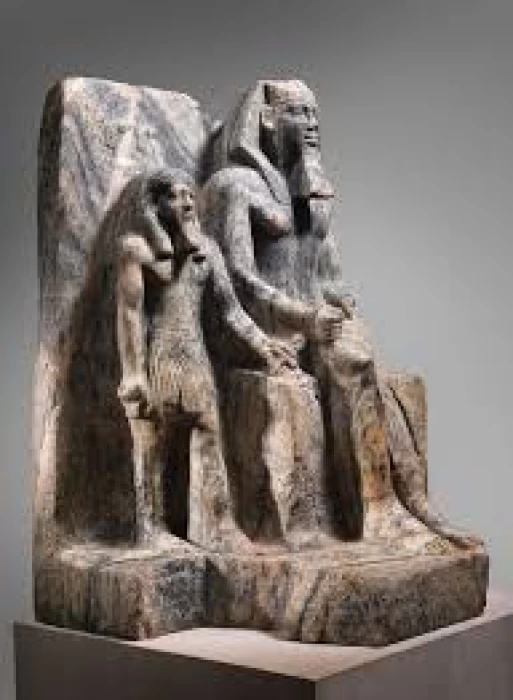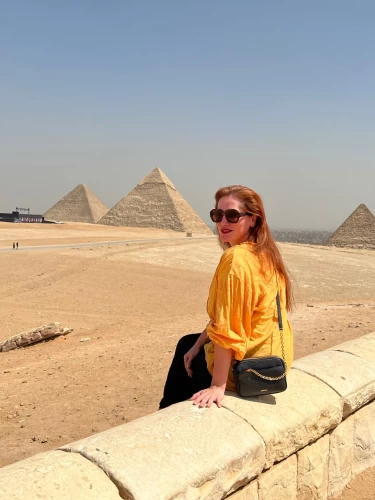
King Sahure | Sahura | 5th Dynasty Kings
King Sahure
The Fifth Dynasty of Ancient Egypt was ruled by Sahure, its second pharaoh, and Nebkhau, also known as Horus, who ruled between 2487 and 2475 AD.
(About 2500 B.C.) Pharaoh of ancient Egypt of the fifth dynasty (Heliopolis). He built a merchant fleet with which his sailors reached the coast of Phenicia and, it seems, the land of Punt (western Somalia). He organized various mining expeditions in Sinai.
The commercial expansion culminated with Sahure, pharaoh of the 5th dynasty, who managed to reach the coasts of Phenicia and the land of Punt (Somalia) by sea and established contacts with Crete.
Sahure was the second king of the Fifth Dynasty. He is represented celebrating the success of this venture in relief from his mortuary temple which shows him offering a myrrh tree in the garden of his palace named "Sahure's splendor rises to heaven". This relief is the only one in Egyptian art depicting king gardening. Sahure sent many expeditions to the turquoise and copper mines in Sinai.
The valley temple, causeway, and mortuary temple of his pyramid complex were once decorated by over 10,000 m2 of elegant reliefs, representing the highest form reached by this art during the Old Kingdom period.
Sahara (meaning "He who is close to Ra") was one of the most important Egyptian pharaohs in history, so he was a symbol of power like the other pharaohs.
At the end of this period, the priests of Egypt increased their power further by producing magical spells that would help the pharaoh during his journey through the Underworld. These spells were inscribed on the walls of the pyramids. They became known as the Pyramid Texts and the majority of the text related to solar and celestial matters. The Pyramid texts admired both the sun god Amun Ra and also Osiris.
Latest Articles
Admin
Seabourn Sojourn Cruise Stops in Safaga Port
The Seabourn Sojourn, the flagship vessel of Seabourn Cruise Line's ultra-luxury fleet, was built in 2008 at the T. Mariotti shipyard in Genoa, Italy. Measuring 198 metres, it can accommodate up to 450 guests in its 225 spacious all-suite staterooms.
Admin
Norwegian Sky Cruise Stops in Safaga Port
Norwegian Cruise Line operates a cruise ship called the Norwegian Sky. It was constructed in 1999 and can accommodate 2,004 passengers in addition to 878 crew members. The ship has several dining establishments, lounges and bars, a spa and fitness center, swimming pools, and a number of entertainment areas.
Admin
Explora II Cruise Stops in Safaga Port
Explora II, the second vessel in the Explora Journeys fleet, sets sail in 2024 to redefine luxury cruising. With 461 ocean-front suites, 9 culinary experiences, and 4 pools, this haven of sophistication and sustainability promises an unforgettable "Ocean State of Mind" journey to inspiring destinations.
Admin
Mein Schiff 6 Cruise Stops in Safaga Port
The Mein Schiff 6 is the latest cruise ship in the renowned TUI Cruises fleet, offering passengers a luxurious and sophisticated cruise experience. At 315 metres long, this floating resort features a range of dining options, entertainment, and recreational facilities, including a spa, fitness centre, and sports amenities.
Admin
Mein Schiff 4 Cruise Stops in Safaga Port
When the Mein Schiff 4 cruise ship docks in Safaga, Egypt, passengers are granted access to a realm of ancient wonders. Aboard this state-of-the-art vessel, guests can embark on meticulously curated shore excursions that showcase the region's most iconic landmarks, including the Giza Pyramids, the enigmatic Sphinx, and the remarkable tombs and temples of the Valley of the Kings in Luxor.
Admin
MS Europa Cruise Stops in Safaga Port
The Silver Moon, Silversea's latest flagship, is a luxury cruise ship that offers an exceptional travel experience for Venezuelans exploring Egypt. With a capacity of 596 guests and an impressive 40,700 gross tonnes, the Silver Moon maintains the small-ship intimacy and spacious all-suite accommodations that are the hallmarks of the Silversea brand.















